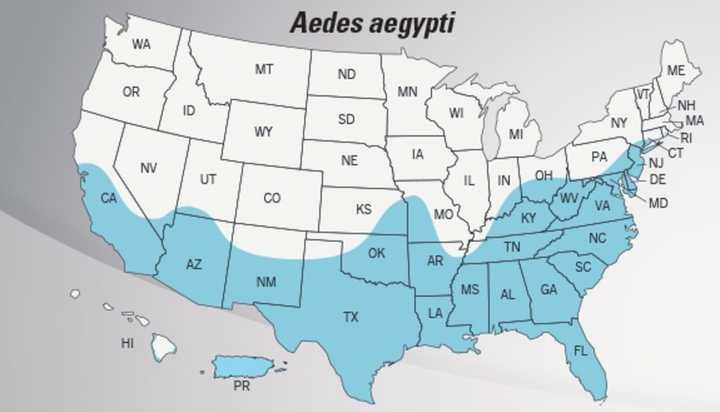New maps, released by the Centers for Disease Control and Prevention, show that the range of Aedes aegypti is a lot farther north than previously estimated.
All of New Jersey, and the lower part of New York and the southern part of Connecticut, could be affected, according to the new maps.
Shaded areas on the map, the CDC said, do not necessarily mean that there are infected mosquitoes in that area.
The CDC also released new estimates of the range of Aedes aegypti’s cousin, Aedes albopictus, a mosquito that is less likely, but can also spread the virus.
So far, 312 Zika cases – 46 of which were reported in New York -- have been registered with the CDC. New York ranks No. 2 in Zika cases among U.S. states.
The agency hastens to note that that number represents people who have contracted Zika elsewhere – such as Central and South America and the Caribbean -- and traveled back to the United States.
There hasn’t been a single case of Zika transmitted by mosquitoes to people in the United States so far, the CDC said.
Nevertheless, the effects of Zika, especially on pregnant women and their babies, are serious enough to raise alarm among health agencies even if the spread could be limited.
In healthy adults, Zika usually causes mild, or no, symptoms.
However, in pregnant women, it has been associated with microcephaly, a neurological condition in which a baby’s brain does not develop as it should and its head is significantly smaller than normal.
Zika has also been linked to Gullain-Barré syndrome, a potentially life-threatening disorder of the nervous system.
The CDC is advising caution when traveling in any area with Zika.
Pregnant women, or those who may be pregnant in the near future, should avoid those areas, the CDC said.
To get travel information, click here.
To prevent mosquito bites, the CDC says, cover up your arms and legs and use an EPA-registered insect repellent.
Click here to follow Daily Voice Armonk and receive free news updates.


